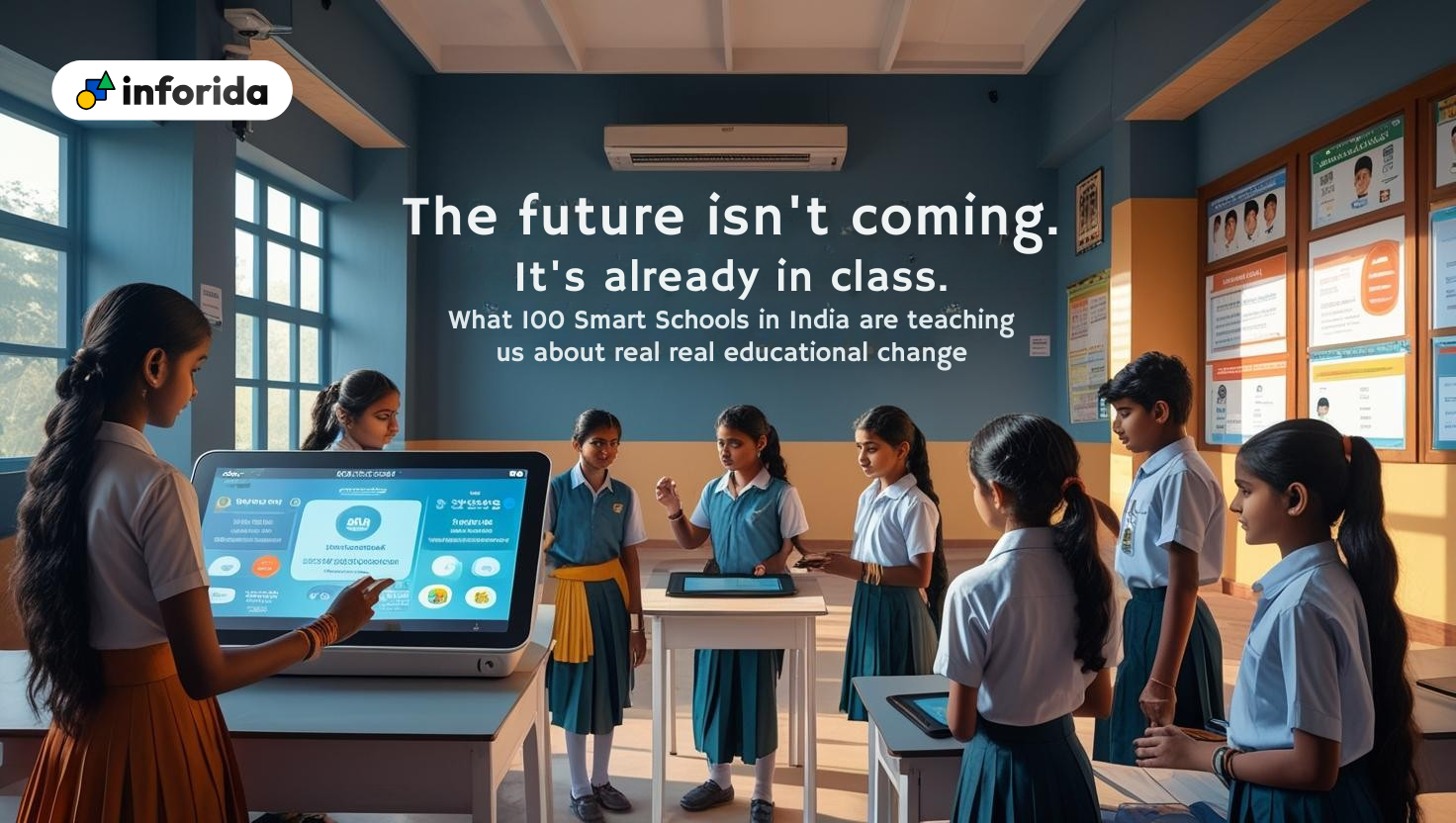What 100 Smart Schools Taught Us About Education in 2025

The Future Isn’t Coming—It’s Already Enrolled
In 2024 and 2025, Inforida worked with over 100 schools across India—urban and rural, public and private—that share one thing in common: a serious commitment to becoming “smart.” Not just smartboards and buzzwords, but real structural change. Together, these institutions serve over 120,000 students and more than 8,000 educators. What we learned wasn’t about gadgets or budgets. It was about habits. Here’s what the most forward-thinking schools are doing differently—and what any school can start doing today.
Unified Platforms Beat Patchwork Solutions
One of the clearest trends across top-performing schools was the move away from fragmented tools. Schools that used separate apps for attendance, fee payments, communication, and academics were plagued by duplicate data entry, misaligned calendars, and fractured reporting.
In contrast, schools that implemented unified systems—like Nucleus for operations and Project Bird for communication—streamlined everything. A fee collected in Pi Pay reflects instantly on the parent portal. Timetable changes trigger automatic alerts. Teacher absences update student schedules in real time.
The result? Admin teams in these schools reported spending 25–40% less time on repetitive tasks, with fewer errors and happier parents. If your staff needs three tabs and two phone calls to answer a parent query, it’s time to consolidate your tools.
AI Works Best When You Don’t Notice It
Many schools expect AI to arrive with fanfare. But the most effective AI we saw was practically invisible.
Orbit AI, for instance, adjusts quiz difficulty based on student performance without interrupting class flow. Smart pacing means fewer drop-offs and deeper engagement. In fact, quiz completion rates jumped 32% in schools using adaptive assessments. Similarly, QuickEnroll AI quietly nurtures prospective parents via WhatsApp and SMS, improving admissions conversion by 18%—without adding pressure on staff.
Even Goood Morning, Inforida’s facial recognition attendance tool, adds subtle emotional flags to help teachers support students beyond the surface. Don’t start with flashy bots. Start with one invisible AI feature that automates a bottleneck your staff already hates.
Teachers Who Use Data, Use It to Teach Better
The smartest schools didn’t hoard data in dashboards—they put it in the hands of teachers.
Each week, educators at a school in Lucknow reviewed Orbit-generated analytics to tweak lesson pacing, identify struggling students, and revise quiz formats. In one case, they used score heatmaps to spot a drop in Grade 9 math performance. A mid-term intervention followed—and the pass rate climbed from 68% to 91% by year’s end.
Across the board, schools that used performance insights proactively—not just reactively—were more likely to close learning gaps early. Don’t just “have” data. Build the habit of using it—weekly, not yearly.
Speak the Parent’s Language—Literally
A surprising success factor? Language.
Schools that adopted Project Bird’s multilingual communication system saw a 47% increase in parent portal logins—especially in Tier 2 and 3 cities. Messages in regional languages, sent via WhatsApp or SMS, ensured that parents not only received updates, but understood and acted on them.
That improved everything from attendance to fee payment rates. It also built trust—especially crucial in communities where education tech is still new. Technology doesn’t build trust—language does. Make sure your platform speaks the same one your parents do.
Conclusion: Smart Is a System, Not a Status
The schools that stood out weren’t the ones with the biggest budgets or fanciest devices. They were the ones with the clearest systems. They unified tools. They automated the boring stuff. They used data early. And they spoke to every stakeholder in their own voice.
Smart schools aren’t just preparing students for the future—they’re showing us what that future already looks like.
Want to know how your school compares? Talk to us at Inforida about a Smart School Readiness Audit—and start learning from the top 100.

